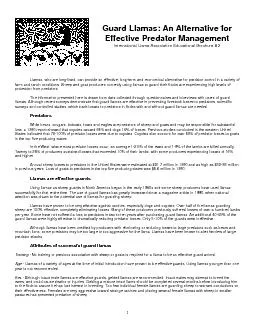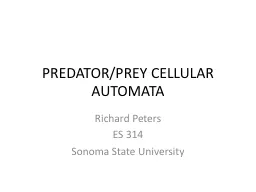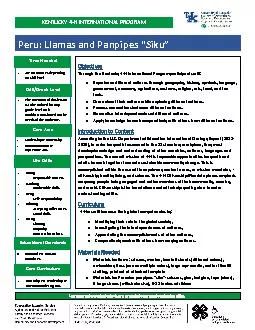PDF-Guard Llamas: An Alternative forEffective Predator ManagementInternati
Author : jane-oiler | Published Date : 2015-08-27
1 2Ratio A single llama per flock is more effective than two or more llamas Several male llamas tend to bond with one another ratherthan with the sheep or goats
Presentation Embed Code
Download Presentation
Download Presentation The PPT/PDF document "Guard Llamas: An Alternative forEffectiv..." is the property of its rightful owner. Permission is granted to download and print the materials on this website for personal, non-commercial use only, and to display it on your personal computer provided you do not modify the materials and that you retain all copyright notices contained in the materials. By downloading content from our website, you accept the terms of this agreement.
Guard Llamas: An Alternative forEffective Predator ManagementInternati: Transcript
Download Rules Of Document
"Guard Llamas: An Alternative forEffective Predator ManagementInternati"The content belongs to its owner. You may download and print it for personal use, without modification, and keep all copyright notices. By downloading, you agree to these terms.
Related Documents














